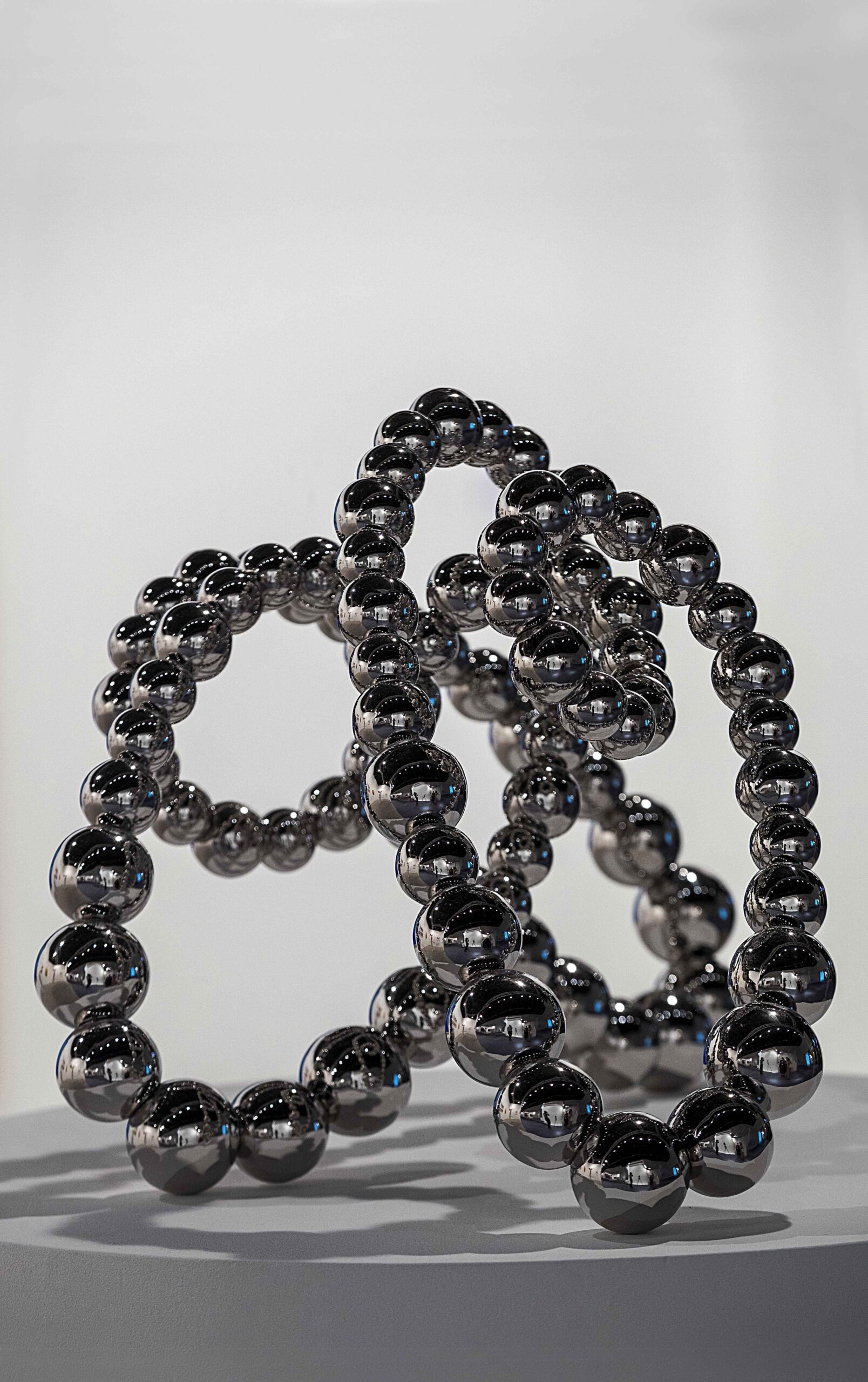Jamil Naqsh & Najmi Sura: An Epic Romance
Marjorie Husain
Jamil Naqsh maintains the balance between elements of cubism,demands of abstraction and the sensibilities of contemporary approach. Whereas Najmi Sura is inclined to the figurative expression. Marjorie Husain explores these style differences of the artist and his artistic muse.
Jamil Naqsh, was born in Kairana, Utter Pradash (India), in 1937. He was a young boy when taken to Pakistan by elder siblings, but the memories of the culture and refinement of his early years were to emerge symbolically in his work in the times to come. One of the exploratory expeditions he visited in Lahore was the mausoleum of the ruins of the tomb of the Mughal Empress, Nur Jahan. There, Jamil Naqsh read the inscribed epitaph Nur Jahan had written. The text was written in Persian script, accessible to Jamil Naqsh who had studied the classic language of poetry with his father. An English version of the epitaph by John Bowen reads: Upon my grave when I shall die / No lamp shall burn or Jasmin lie No candle with unsteady flame / Serve as reminder of my fame No bulbul chanting overhead / Shall tell the world that I am dead. Moved by the words and the relics of a bygone grandeur, young Naqsh mused on the past when the Empress Nur Jahan would sit behind the Emperor in court and participate in court decisions.
He was heartened to see that the tomb was in fact very much a living marvel. There were pigeons nesting in broken walls and flying amongst the remnants of the brilliant blue of the tiled lattice work, in Naqsh’s imagination they appeared as guardians of the ruins. As he quietly watched them, they appeared to him as living links with the past, and a familiar affinity with his distant home. For Jamil Naqsh, throughout his life, the birds were to symbolize an integral facet of his early years and the peaceful boyhood he had left behind on the banks of the river Jumna. As a teenager he began an epic, two-year journey, traveling alone on foot through other regions. The experience taught him a great deal about art and the traditions of the past, which he absorbed with respect and interest. On his return to Lahore, Naqsh joined the Mayo School of Art. There he explored the aesthetics of contemporary art, before joining the studio of Ustad Mohammad Sharif where he learnt the rudiments and techniques of miniature art.


